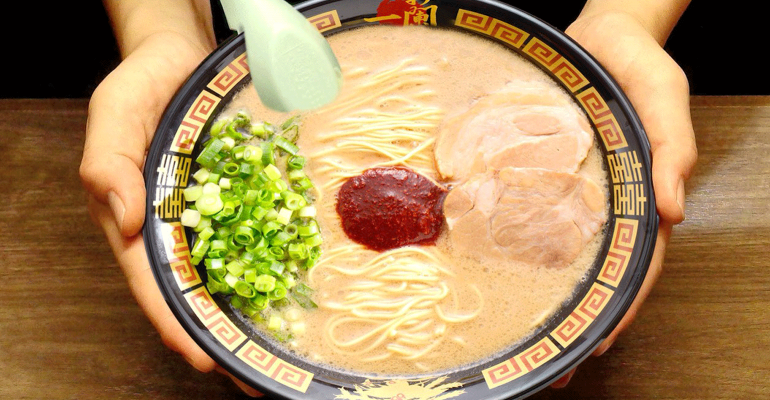The industry keeps buzzing about omnipresent restaurant trends like vegetable-centric eateries and the continued growth of automation. But what about restaurants that march to the beat of their own drum? Within the pack mentality of the industry, there are restaurants that zig when others zag; they yearn to stand out by very deliberately not doing what so many others do.
Here’s a look at four restaurants that seek to buck the trend in some way and, by choosing their own path, may blaze new trails.
Ichiran: A celebration of the table for one
In America, going out to eat is just as much as a social experience as it is a culinary one. But at Ichiran — a tonkotsu ramen restaurant chain with 77 locations worldwide and two in the United States —dining is stripped away of any social interaction. Customers who choose the solo-dining experience are required to dine companionless inside “flavor concentration booths.” The restaurant also has a regular dining room for those who prefer company.
“We are such social eaters in America, a lot of times we’ll eat without thinking about what we’re eating, which can end up with us not eating high-quality food,” Kayla Copeland, a representative for Ichiran said. “Here, it’s about the sensation of the food.”
Customers don’t even have to interact with servers.
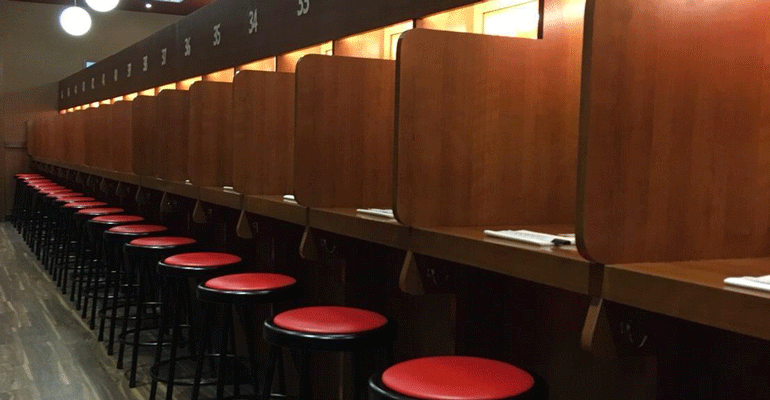
“They don’t show you their face unless you ask a question, otherwise it’s just a pair of hands and a nice voice,” Copeland said.
Solo diners enter their booth — which is separated from other diners by partitions, much like a row of office cubicles — and order their bowl of tonkotsu ramen via an order form. Everything, from the toppings, to the oil level, saltiness, and firmness of the ramen noodles can be customized. For those who are overwhelmed by choices, the restaurant provides a recommended bowl with the most popular toppings for $24, although the basic bowl costs $18.90.
Since Ichiran opened its first U.S. location in 2016 — a 44-seat restaurant in Brooklyn, N.Y. — the restaurant has become a viral sensation for its unusual premise.
“We’ve definitely already had some copycats out there,” Copeland said. “I’m glad that this idea is catching on. Imitation is the sincerest form of flattery.”
Ichiran is scheduled to open its third U.S. location in Times Square in New York City in early 2019.
Reverie: The pay-what-you-can tasting menu
Most diners can’t afford the classic chef’s table experience which can cost hundreds of dollars per person. But chef Johnny Spero of Netflix’s “The Final Table” wants to make tasting menus more accessible to the average food lover.
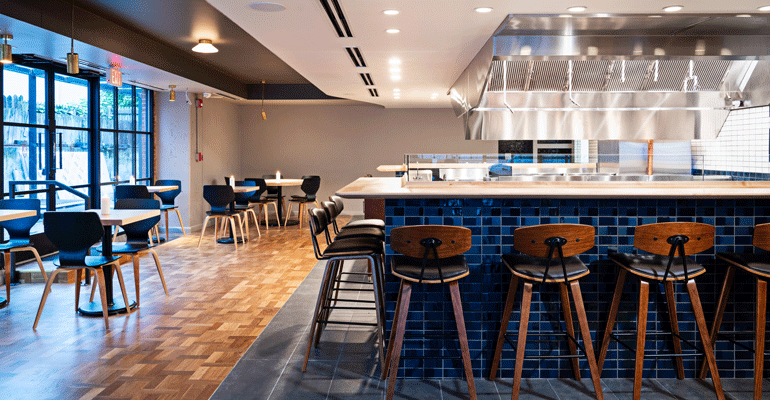
At Reverie — Spero’s 64-seat contemporary American Washington, D.C.-based restaurant that opened in October — the six-course tasting menu is pay-what-you-can, alcohol not included.
“We’re trying to be an approachable fine-dining restaurant,” Spero said. “Everyone is interested in food now with [shows like Netflix’s] ‘Chef’s Table.’ This allows people who could previously only afford to watch high-end dining on their TV to experience it firsthand.”
Spero launched the pay-what-you-can tasting menu in December 2018. He only sets aside one seating of two guests for the tasting-table experience per night. When Spero’s team released tickets for the first wave of reservations, they were sold out within 10 minutes, he said.
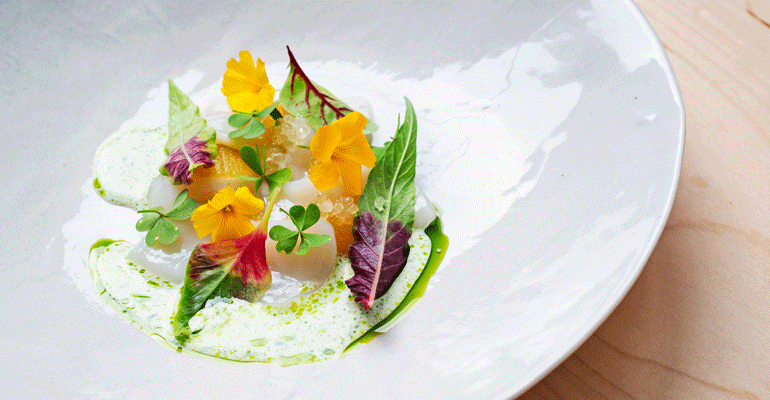
“People give what they feel comfortable with,” Spero said. “Since it’s only one seating per night, even if someone gives $5, they can do that and it won’t hurt us financially.”
Spero said the new format allows him to relax and get creative. One of the first tasting menus he served included Carabineros (giant Spanish shrimp) three ways and a braised and roasted lamb dish topped with a savory black- and red-currant sauce.
If the dishes go over well with his diners, Spero said, he can add them to the regular menu, with an average check of $65 per person.
Jarr Bar: Serving canned seafood
As the farm-to-table trend becomes less of a movement and more of a given at restaurants of a certain caliber, choosing to not serve fresh food feels like a bold choice. Jarr Bar — a casual bar in Seattle — primarily serves drinks and canned seafood. Although tinned fish was one of Nation’s Restaurant News’ industry trend predictions for 2019, canned food is still a tough sell.
Owner Bryan Jarr was inspired by a trip to Spain when he “fell in love with” the tapas and pinchos bars in Spain that served high-end tinned seafood like sardines or octopus. In Europe, he said, tinned seafood is more of a normal menu item and is not looked down upon like it is in America.
“Originally in the United States, canned seafood was an inexpensive product for the masses,” Jarr said. “Only now are you starting to be able to convince people, ‘what about instead of Bumblebee tuna on a shelf, you could try this amazing canned product … from Alaska?’”
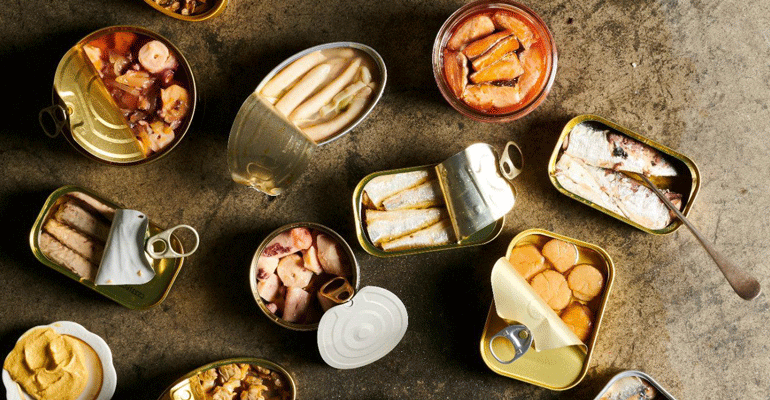
He opened up the 480-square-foot Jarr Bar in 2015, which serves small plates and 10 different tinned seafood varieties — from octopus to mackerel — with an average check of $25 per person.
“We have turned a lot of people onto the use of canned seafood,” Jarr said. “It’s not just opening a tin and eating out of it.”
Although the menu is pretty simple, Jarr plans on experimenting more with canned ingredients at his upcoming seafood restaurant Little Fish, which is opening in Seattle later in 2019.
Il Triangolo: A dress code and no phones at the table
At Il Triangolo — a 3,000-square-foot classic red-sauce Italian restaurant in Queens, N.Y. — men are required to wear button-down shirts on Friday and Saturday nights, customers have to remove their hats upon entering the restaurant, and cell-phone conversations are banned from the table. The rules might sound old-fashioned, but to owner Mario Gigliotti, this is exactly how all dining experiences should be.
“I run my restaurant old-school style,” Gigliotti said. “When I was growing up when we went out to dinner, we got dressed up. No jeans, no sneakers. I’m trying to bring it back to those days.”
The menu of classic antipasti, homemade pasta, grilled entrees, chicken parmigiana, and seafood has an average check of $45 per person with alcohol.
Gigliotti also does not allow people to leave coats on the chairs and requires customers to have their belongings coat-checked. He thinks that his policies give the appearance of a neater and classier dining establishment.
Although anti-cell phone policies are having a moment — Brooklyn’s Carthage Must Be Destroyed and David Chang’s Momofuku Ko have made headlines for their strict cell phone policies — Il Triangolo’s policy has been in place for six years, just a year and a half after the restaurant opened.
“Cell phones don’t belong on the table. The only thing that belongs on the table is my food,” Gigliotti said.
While phone conversations and texting are no-no’s, he does make an exception for taking photos for social media, which he said is great for publicity.
While many customers applaud his distinctive dining-room rules, Gigliotti said some guests have left the restaurant when they hear about his strict no-hat policy or cell phone ban. But he won’t change his rules, no matter what pushback the restaurant receives.
“You’re not going to McDonald’s,” he said.
Contact Joanna Fantozzi at [email protected]
Follow her on Twitter: @JoannaFantozzi

